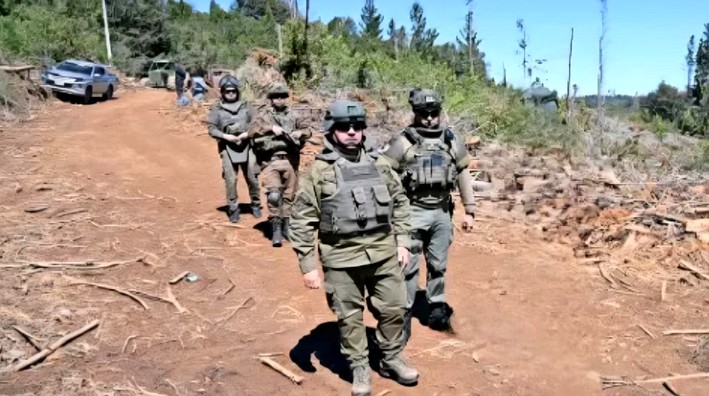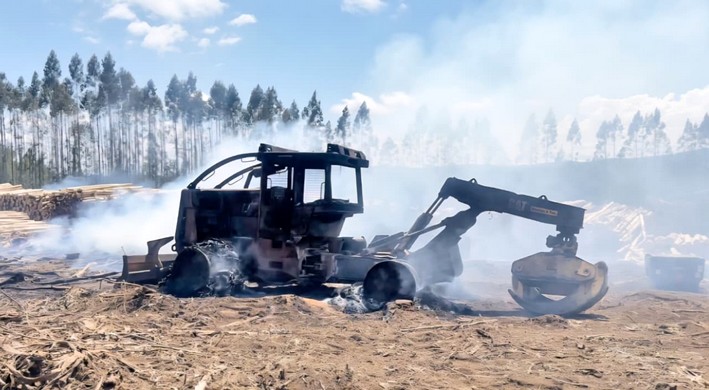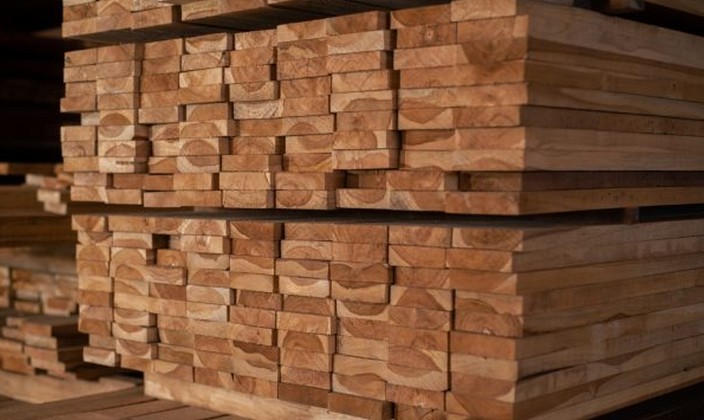Community Prevention Network Has Been Key to Reducing Negative Effects of Wildfires
There are currently 366 committees active in 6 regions of the country. The joint work between neighbors, companies, and institutions has been crucial, especially in rural areas, to prevent disasters.
The year 2017 was catastrophic. Thousands of hectares were ravaged by fire, to the point that towns like Santa Olga, located in the Constitución commune in the Maule Region, were wiped out by flames, destroying 1,000 homes in just four hours.
That scenario, besides destroying properties, dreams, and taking the lives of Chileans, left lessons—where the concept of prevention gained strength and sparked a broader questioning of the issue.
Thus, with the support of some forestry companies, the Community Prevention Network was born, which today operates from the O'Higgins Region to the Los Ríos Region.
Paola Méndez, coordinator of a team of managers for the Community Prevention Network, recalled that after the mega-fires, this initiative was implemented by identifying areas with different types of vulnerabilities based on their proximity to fire-prone zones.
She added that these localities had different selection criteria, starting with 200 committees at the time and now reaching 366. "There is a robust system for recording fieldwork. We have a work cycle with key milestones. When we arrive at a location, we contact neighborhood associations, municipal teams, or emergency officers because, generally, local governments are aware of their most vulnerable areas," she emphasized.
Once a location is chosen, an open call is made to various stakeholders. The initial outreach is with neighborhood associations, but if they don’t exist or are inactive, a prevention committee is formed, integrating different groups. "Sometimes, we even work with sports clubs. We have a territorial vision, but different organizations are called upon to define their scope," she explained.
To understand the territory’s landscape, they create a map to determine the committee’s operational range. Then, work begins with a small induction on risks, wildfires, how they spread, along with a preventive talk.
Actions
"In these 6 years of work, there have been changes in how we differentiate actions. One of them, applied in the first year, was physical—aimed at eliminating risks, such as building firebreaks or cleaning yards. For example, if we detected trees touching medium-voltage power lines, we contacted the electric company, which handles pruning. We set a reasonable deadline for it," she said.
However, she acknowledged that shifting from a reactive to a preventive culture was not easy. Thus, there was a gradual approach, with plans containing preventive actions. Additionally, they included an educational component for prevention, and today, utility, sanitation, and forestry companies act proactively because they know when risk assessments are conducted. They submit reports and follow up—a year-round practice.
Still, Paola Méndez believes more prevention is needed, so every year they go door-to-door to distribute graphic materials highlighting key points. Also, the work is highly specific to each locality, as each has different fire causes.
"Since we do this work constantly, it has yielded positive results. Neighbors now report anything unusual immediately because any negligent action can lead to a fire. Residents are extremely alert and report issues promptly," she stated.
Positive Analysis
The committee conducts an analysis of fires in their operational area. Since the network’s inception until the third week of March, there were 794 fires, 60% of which were intentional. Compared to the previous season, 35% of committees reduced their fire incidents. Notably, 120 committees had no emergencies.
Interestingly, over the years, the network’s work has gained recognition, and often, municipalities, neighborhood associations, or local leaders seek to establish this initiative themselves.

















